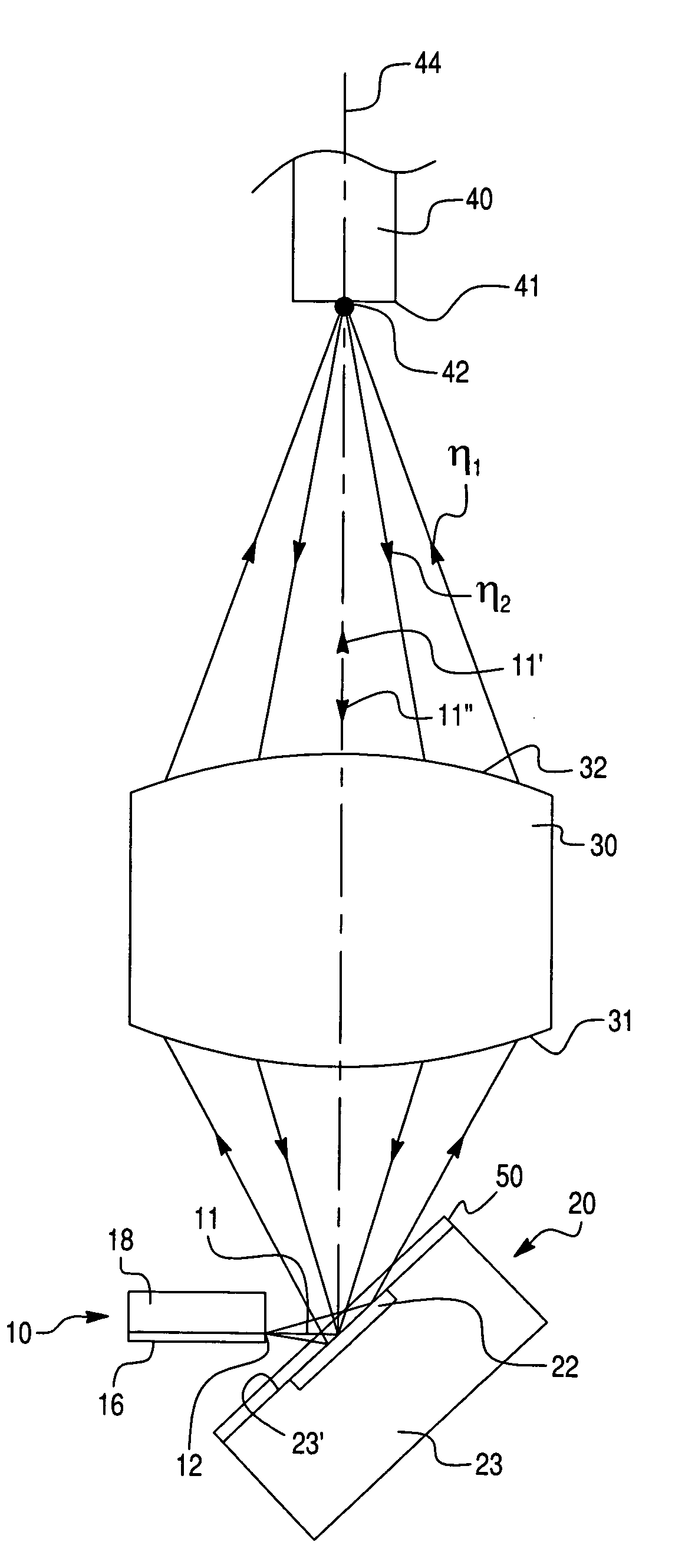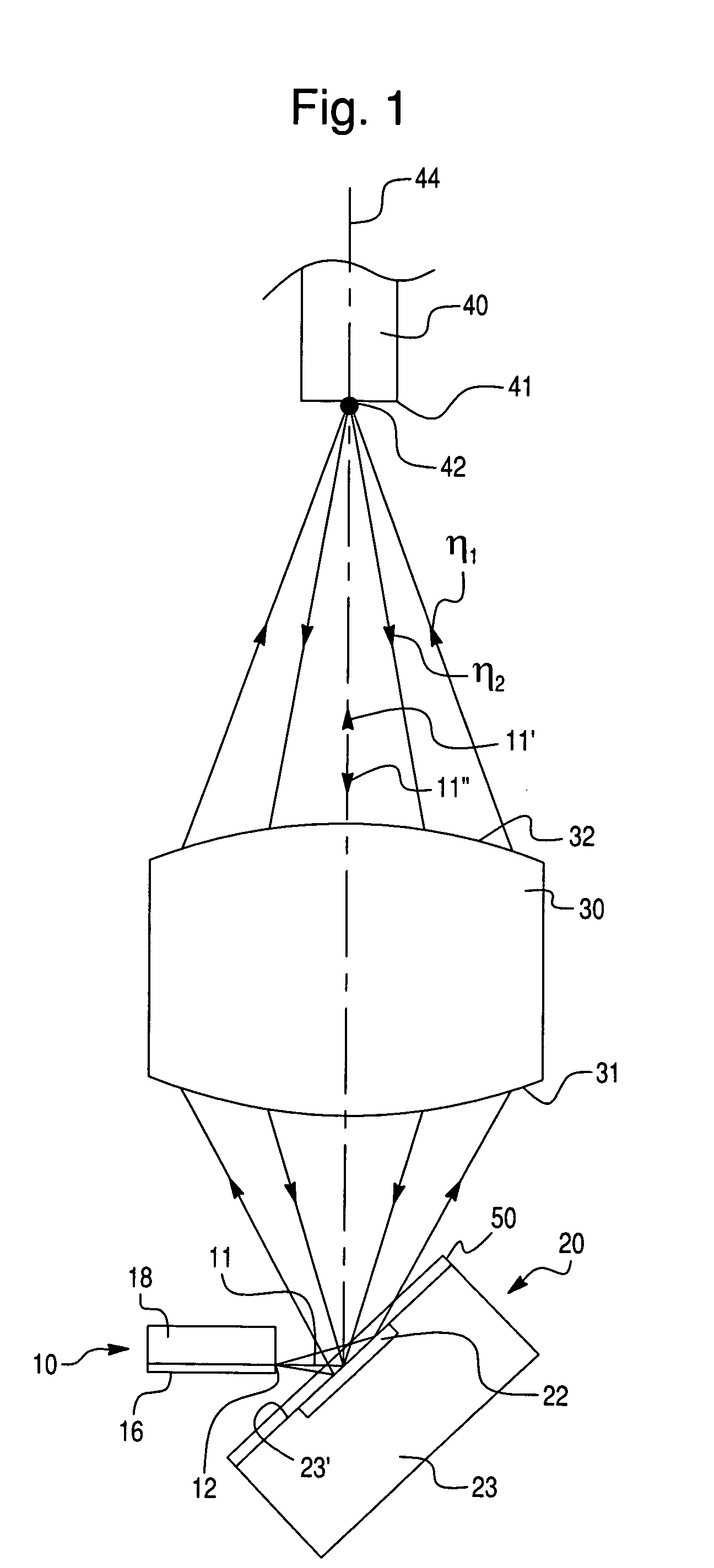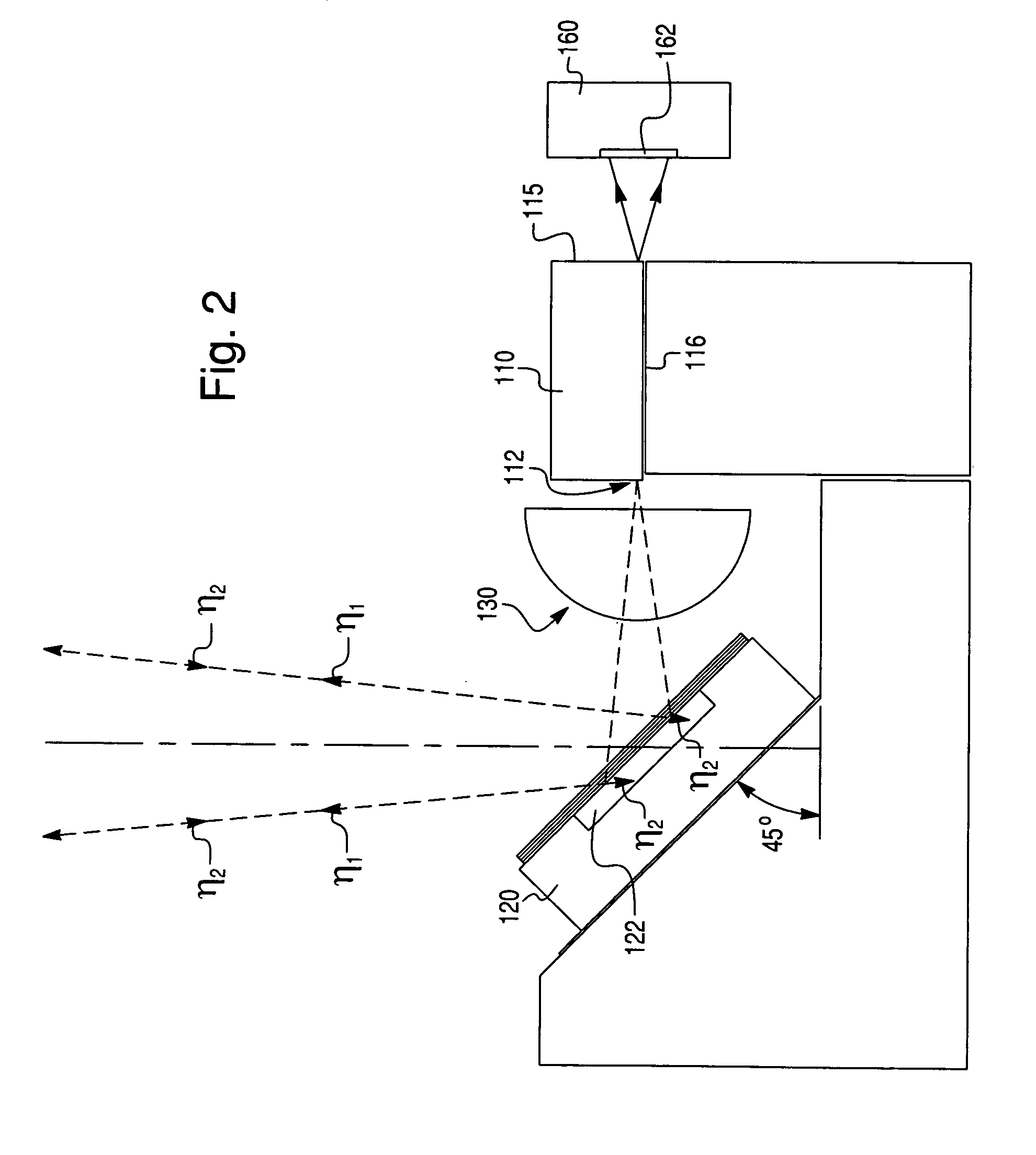Optical discriminator for transmitting and receiving in both optical fiber and free space applications
- Summary
- Abstract
- Description
- Claims
- Application Information
AI Technical Summary
Benefits of technology
Problems solved by technology
Method used
Image
Examples
Embodiment Construction
[0021]The principles of the present invention are particularly useful when incorporated in a bi-directional optical transmission and reception arrangement illustrated in FIG. 1. The arrangement of FIG. 1, as well as the arrangements of FIGS. 2–4, each comprise an optical transmitter (e.g., a laser diode source of the edge or surface emitting type), generally indicated at 10, having a transmission exit pupil 12 for emitting an optical radiation having the first wavelength λ1. The optical transmitter 10 is aimed at an optical discriminator (e.g., a PIN photodiode having a dichroic thin film coating), generally indicated at 20, having an absorbing region 22 acting as a receiver window for the reception of an optical radiation of the second wavelength λ2, whereby the optical discriminator 20 is preferably disposed at an angle of 45° with respect to the axis of the optical transmitter 10.
[0022]As will become apparent from this description, an important feature of the instant invention is...
PUM
 Login to View More
Login to View More Abstract
Description
Claims
Application Information
 Login to View More
Login to View More - R&D
- Intellectual Property
- Life Sciences
- Materials
- Tech Scout
- Unparalleled Data Quality
- Higher Quality Content
- 60% Fewer Hallucinations
Browse by: Latest US Patents, China's latest patents, Technical Efficacy Thesaurus, Application Domain, Technology Topic, Popular Technical Reports.
© 2025 PatSnap. All rights reserved.Legal|Privacy policy|Modern Slavery Act Transparency Statement|Sitemap|About US| Contact US: help@patsnap.com



